I am probably the last person on the internet to review this handheld. I was in two minds whether it was worth it at this stage. The main reason for the extreme lateness of this review are the problems I had with the d-pad and buttons. I thought that this was only an issue with the pre-production units, so I waited patiently for a replacement. Unfortunately it looks like some retail versions are affected by unresponsive buttons as well. My second replacement New PocketGo is a little better, but still not perfect. Read on for my New PocketGo Review.
The New PocketGo houses the same chip as the GCW Zero, Neo Geo X and the RG350. It’s the natural successor to the JZ4760/B handhelds from 2018 and 2019. The Neo Geo X and GCW Zero are considered old and obsolete handhelds now. It’s slightly bizarre to see this same chip creating so much hype again almost 8 years later.
The New PocketGo aims to improve over its predecessor by offering a larger screen, an analog stick, two extra shoulder buttons and a more powerful CPU. There are some other nice additions such as 2 microSD slots, both accessible from the outside of the shell. A user replaceable battery is a very nice touch as well.
Out of the box
Out of the box the New PocketGo is a good size, with the 3.5″ IPS display occupying a large vertical area on the face of the device. The unit feels well built in most areas, although I must admit that the V1 feels like a slightly higher quality handheld. The battery cover is a bad fit, on my 3 units it’s not possible to make it sit perfectly flush with the case.
On boot up you’re greeted with a colourfully skinned version of OpenDingux. This OS works fine in most cases, but it’s unlikely there will be many official updates from the BittBoy team for this OS.
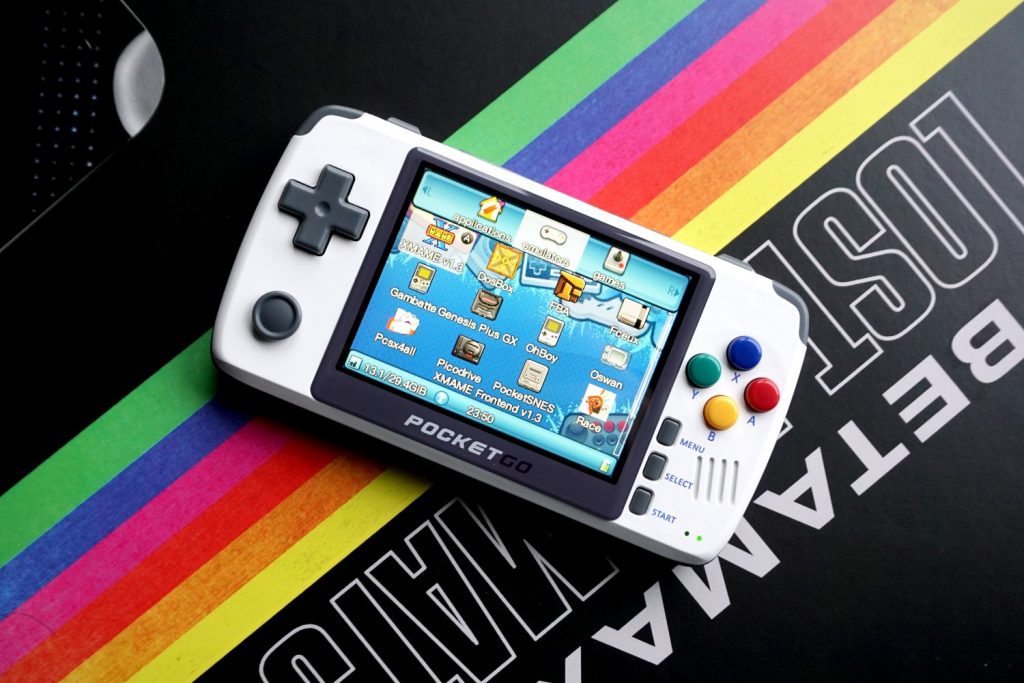
For this reason there are a few developers working on replacement Operating Systems, the most popular currently being ROGUE.
Rogue and performance
Flashing ROGUE is as easy as visiting the github and downloading the latest image. Simply flash it to a slot1 microSD and away you go. The OS comes with minimal additional software, you can grab emulators and such from here. Emulators and games go into media/data/apps on the OS card, or into media/sdcard/apps if you’re using the second microSD slot for this. If you’re using the 2nd SD card on a Windows machine, simply create a directory named ‘apps’ on the card and drop your OPKs in there. The PocketGo will correctly map the directory.
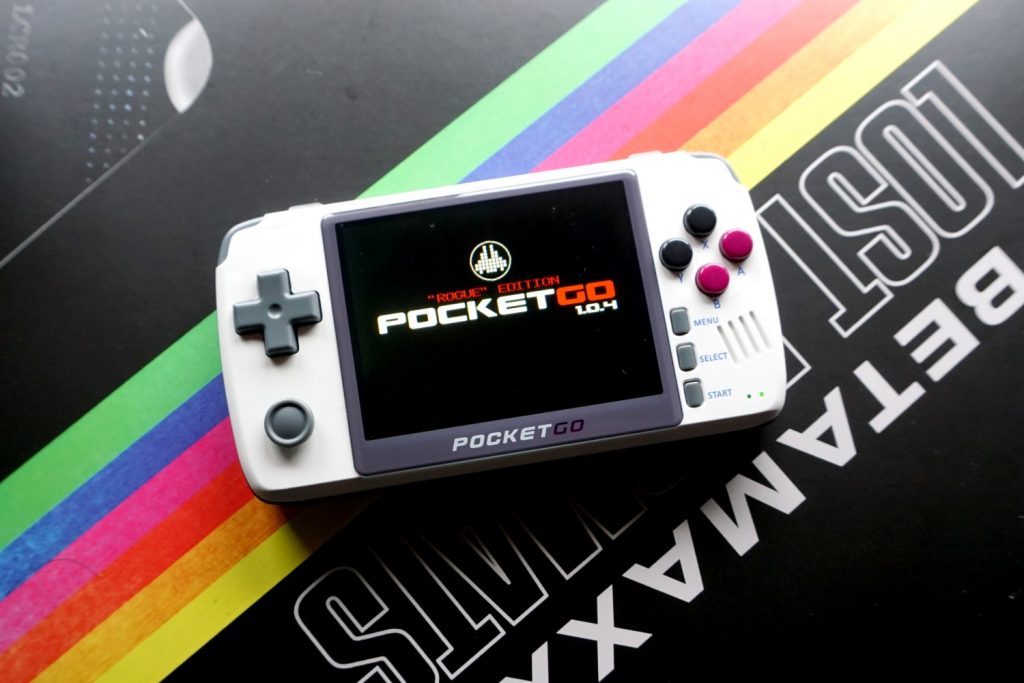
If you’re concerned about losing ROMs, connect via FTP first and copy them to your PC. You can then transfer them back to the device afterwards.
There is also a port of Emulation Station in active development.
The performance is as you’d expect for another JZ4770 device. It handles a large portion of PS1 games very well, and the harder to emulate SNES games mostly run at full or close to full speed. CPS3 is where it bottoms out on the arcade front, with some games running OK but a lot being unplayable. If you’re hoping for N64, Dreamcast or anything later then you need an Android device like the GPD XD+. The upcoming Linux based Odroid-Go Advance will probably be a good bet too.
The bad things
It wouldn’t be a BittBoy product without some issues. The New PocketGo has its fair share. As mentioned previously, many units seem to suffer from unreliable inputs. My pre-production model had problems with not only the d-pad but also the ABXY buttons. My replacement retail units have d-pad issues too. I’ve tried all the usual tricks such as cleaning the board contacts and membrane with isopropyl alcohol. I also tried adding a little height to the d-pad legs with tape, as others have reportedly had success that way. The result still isn’t perfect. I do find that in games I naturally tend to press the d-pad with enough force for it to function normally though. It’s mostly in the menu that a lighter touch fails to register.
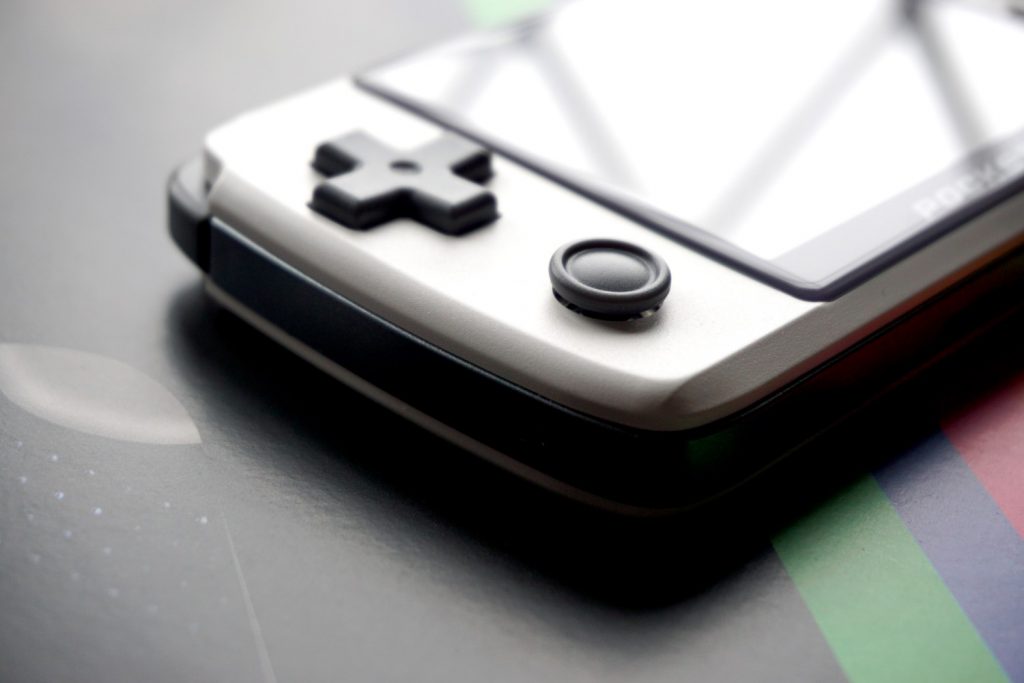
Some people have had success fixing the inputs using one or both of the above methods, but others have said that the fix is temporary and over time the inputs become unreliable again. Personally I think the fault is with the membranes. Unfortunately the only replacements I have are for the GBA and they don’t fit. I will be looking for a compatible replacement to see if it does the trick.
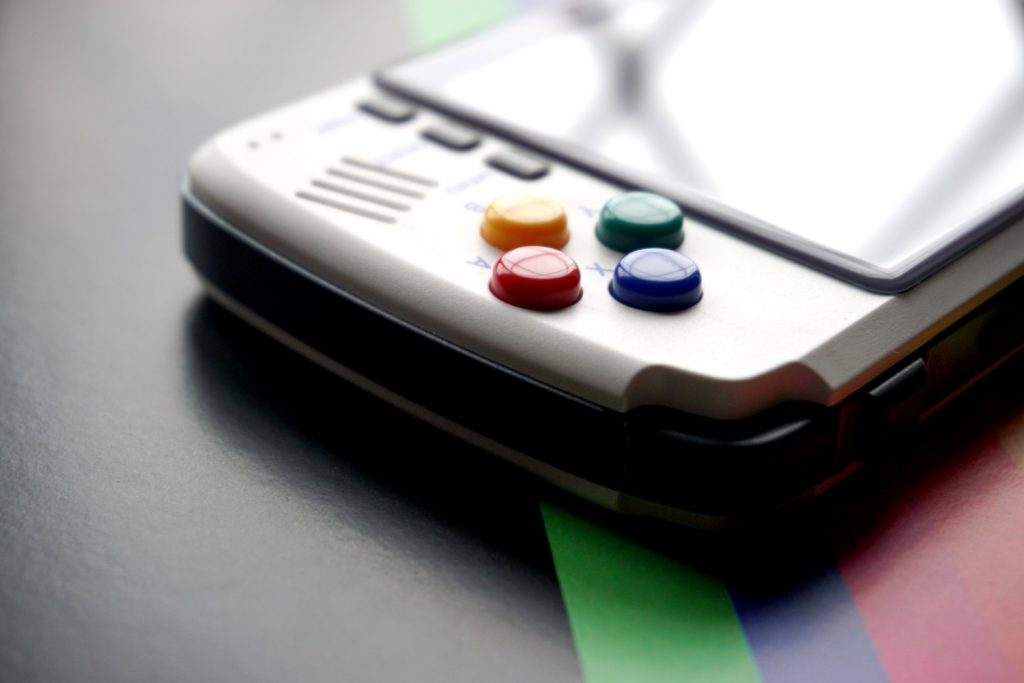
Another issue is with the volume control. From silent, the first increment in volume takes you straight to 32 out of 100 in alsa mixer. Apparently though this is not the source of the problem, as the hardware reports only a 3% jump from 0% on the first increment. For many this is too loud and unfortunately this doesn’t seem like something that can be fixed in firmware. The solution requires soldering a ~64ohm resistor inline on the black speaker cable. Thanks to xs4all on the Discord server for these explanatory images.
You could also bodge it by applying tape to the inside of the speaker grill, but this does have a detrimental effect on the sound quality.
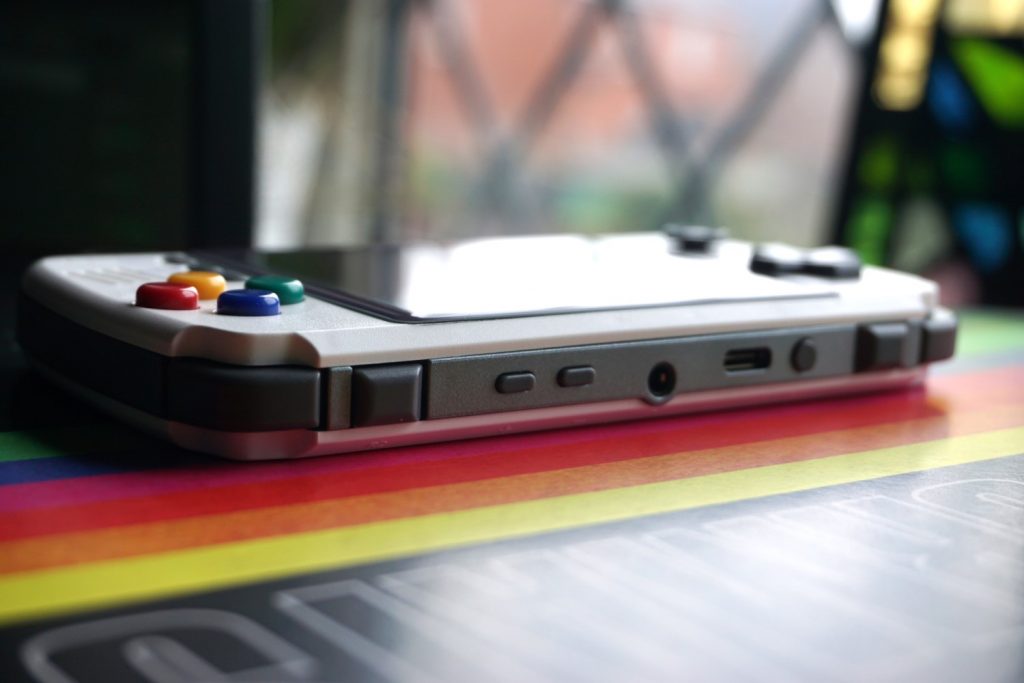
The analog stick is also a major gripe. It’s all very well having a slider that registers analog movements, but comparing it to the sticks on the RG350 is like comparing apples to oranges. The range of movement is smaller and it’s much harder to apply small calculated increments. The thumb stick is slippery and the entire thing spins around in its socket. On the upside it makes the handheld much easier to slide into a pocket, as the stick only protrudes a few millimetres from the shell. I would take the RG350 sticks over this though, they’re much better.
The good things
The New PocketGo does do many things right. Having 2 accessible microSD slots is a great solution. It makes adding ROMs or replacing the OS a breeze. The user replaceable battery is also a massive bonus. You can buy replacement batteries on AliExpress for a few dollars. It means you can carry around a few pre-charged if you’re going on a long trip.
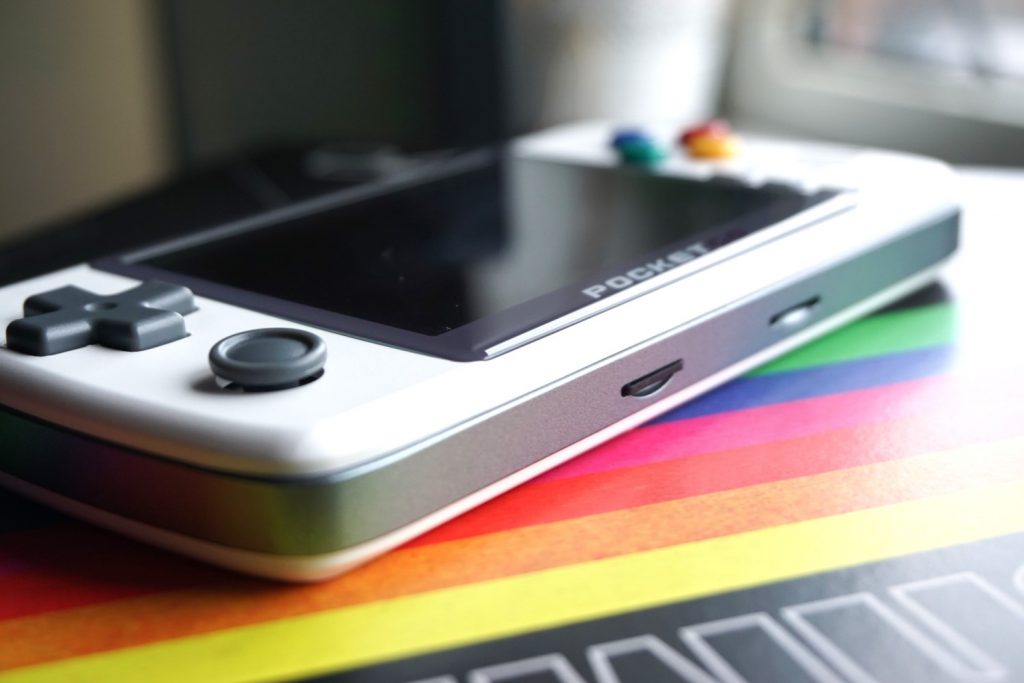
The IPS display is very high quality too. Colours are super vivid and vibrant and the viewing angles are excellent. The refresh rate is correctly set at 60hz which means no screen tearing at all in any emulators. It would be nice to start seeing higher resolution screens in these things, but for most consoles 320×240 does the job OK.
Conclusion
If this handheld had come out a year ago and didn’t have the issues it currently has, I would probably be singing from the rooftops about it. As it stands though it’s difficult to recommend. Assuming you get a unit without any problems, it’s a very neat little handheld. It has enough grunt to keep most people happy, and at around $65 it’s quite the bargain. It certainly has some plus points over the RG350, but overall the RG350 is a superior handheld in most ways in my opinion.
If you’re in the market for a cheap and capable JZ4770 handheld with a very active community, and are willing to take a risk on the controls then the New PocketGo is a reasonable choice. If you’d prefer higher quality dual analog sticks and are willing to look past the slightly awkward d-pad placement then I would recommend the RG350 instead.
Having said that, the Odroid-Go Advance is just around the corner. It promises a lot more than either of these handhelds can offer in terms of performance.
The New PocketGo is currently available in 3 colours. The PocketGo branded version is grey and it’s available from RetroMimi. The manufacturer, Wolsen, have black and red versions branded as PlayGo on AliExpress too.
Grey New PocketGo
Red New PocketGo (PlayGo branded)
Black New PocketGo (PlayGo branded)

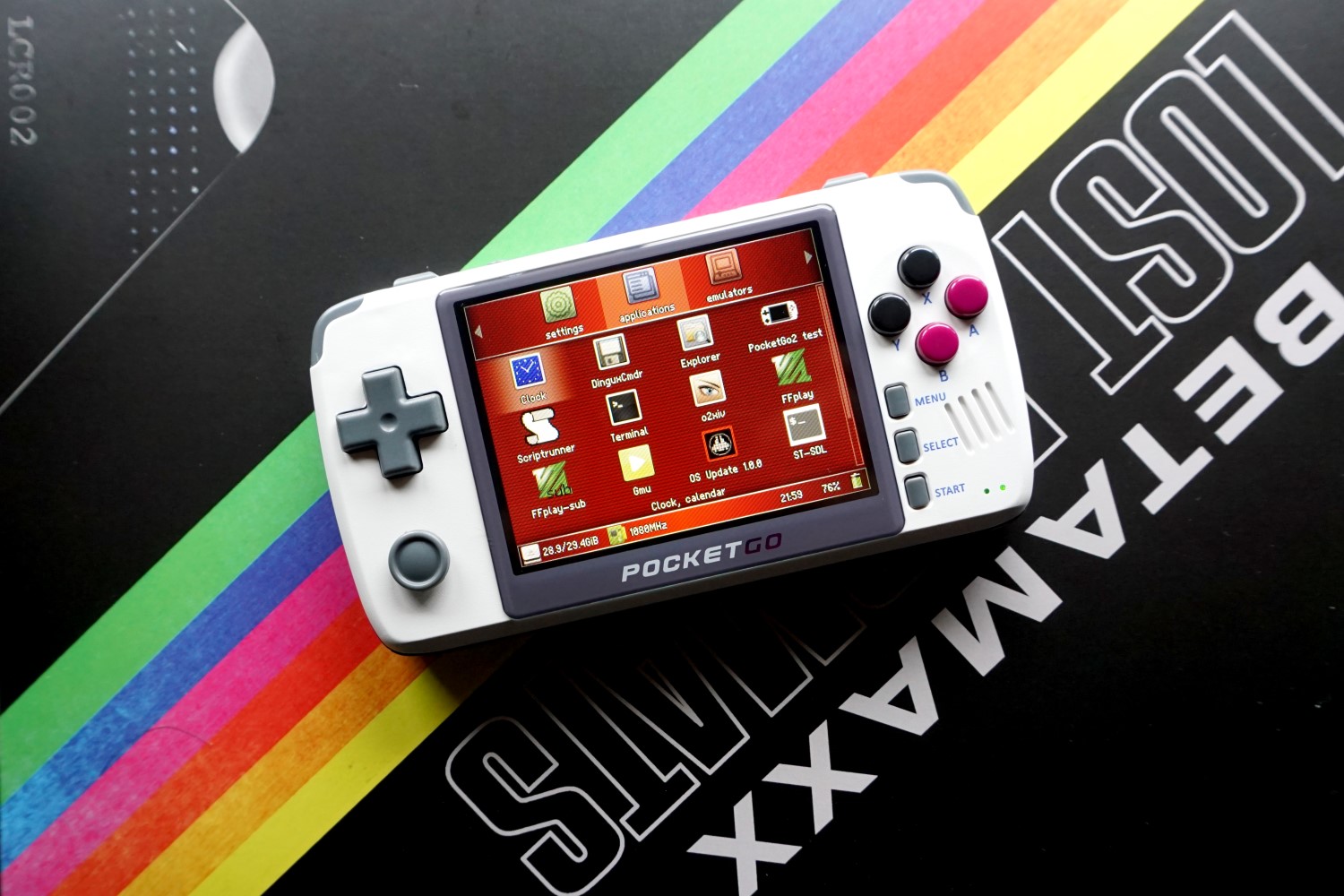
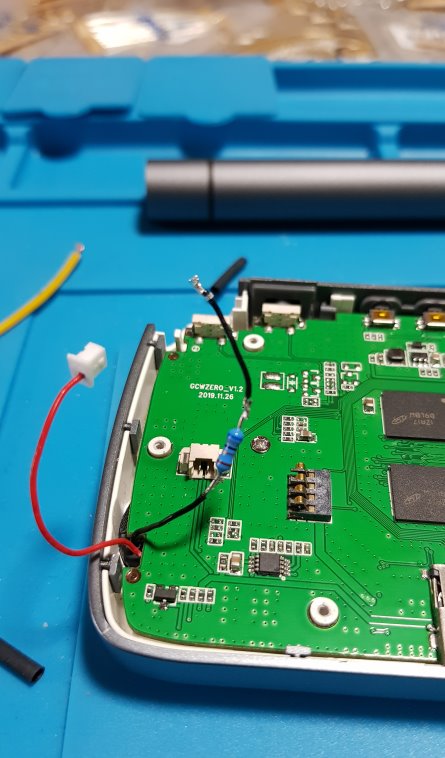
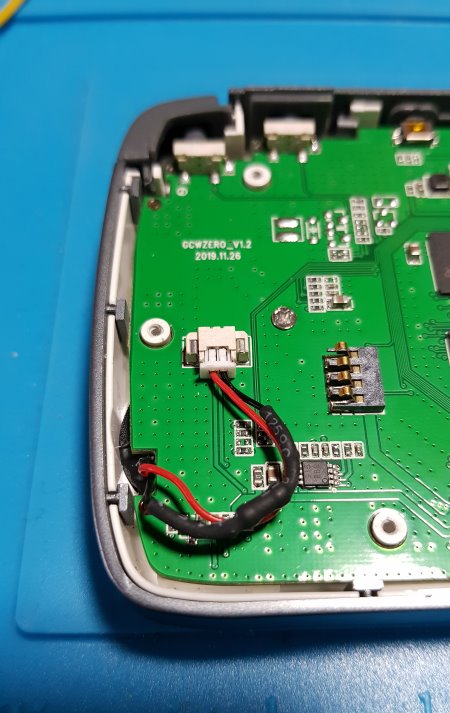
I own a black Playgo (and a GCW Zero and a RG350).
I sold my RG350 because it felt too cheap (plastic).
I have ordered the RG350M instead (in the mail).
I *really* like the Playgo! It is compact and feels great. No issues with the buttons, I love it!
IMHO the 64 Ohm is not enough if you want to have nice quiet sound for late play sessions. I used 220 Ohm following Reddit advice and it plays great.
So this is why I haven’t seen a dip in regular PocketGos’ prices.
Definitely the most accurate review I have read. I have had multiple issues with my device. D-pad issues (tape mostly fixed this but it’s still an issue), dead pixel in the center of the screen, speaker issue that is universal and now my screen glass is separating. Grabbing an Odroid Go Advance and never going back to Bitboy again. This device is not even worth $60 unfortunately.
I’m super disappointed in all the people on YouTube shilling for this system who never said a lick about the problems with the dpad. YouTube should demonetize their videos based on fraud
Well… I bought an Odroid Go Advance and it’s a disaster.
L button and power button don’t work.
I’m not sure if I’m getting the same problem but it’s possible for me to press the ABXY keys enough that it feels like they connected without registering a touch. An ever so slight increase in pressure makes them register – is this the same thing?
Same issue as the d-pad. You can try switching the membrane with the d-pad one and then using tape on the d-pad directional buttons that are not registering fully.
I find the issue with the input disappointing because the original PocketGo didn’t have this problem.
Then again the original BittBoy went through multiple revisions before they finally got it right, sigh.
Too bad for such a nice form factor. You think there is chance quality will improve? The speaker mod I guess I can deal with. But the other things are kind of deal breakers.
What a shame, Im specifically sensitive to unreliable inputs.
Really hurts the experience.
What makes this so sad is that this device has a really cool name and physical appearance. This is the handheld I would have wanted too if it wasn’t for those issues.
I had the same problem on Pocket Go with the buttons. If I casually press them, they don’t register, I have to press the button consciously and deep.
This made me appreciate the RG350 I had previously bought. Same exact hardware, but flawless input, solid construction, it’s much better than the GCW0 too. It’s GCW0 resurrected.
Huzzah, accurate review. Another tip that fixes the inputs is to use some fine grit sandpaper to lightly sand the PCB contacts, then clean with alcohol. That’s what fixed mine.
I killed my pg2 display while trying to fix inputs initially. I bought an rg350 and gkd350h while I waited for the replacement pg2 screen. Then I bought some raven flat sticks for the rg350.
The rg350 is a wonderful device, the complete opposite of the pg2. I thought I would hate the dpad placement but I don’t, it’s perfectly fine. I sold the gkd350h as it didn’t do anything better than the other two devices, and is missing a GPU so therefore for SDL2 or IPU.
In summary: I have a pg2 for sale for cheap.
therefore NO* SDL2 or IPU
This seems like a great little system, but it has a few downsides. First, no Android(?!?). I very much like the Android ecosystem and I’m just not willing to do without it. Second, the screen size. 3.5″ is just not good enough. 5.5″ minimum or no go. Third, no second analog stick. That one isn’t as important, but still needs to be mentioned.
Fix those problems and I’m in like Flynn.
Android, a second analog stick, and a much bigger screen? You’re basically saying “it looks great except I want a totally different device.” If they made all the changes you’re talking about it’d be a very different handheld at a different price point.
Oh, you picked up on that? Cool. Yes, that’s what I’m saying. I’m ok if it’s more expensive.
So buy one of the many larger, more expensive devices that run Android. Your comment is akin to one saying “yeah, the Ford Fiesta looks great, except couldn’t they make it a full-size pickup truck?” And the proliferation of sub-$100 3.5″ portable suggests plenty of people want such devices.
You don’t seems to get the point. I like the form factor and the styling. I’d just like a scaled up version of it with Android. There isn’t a lot to choose from in that area. So quit picking a fight.